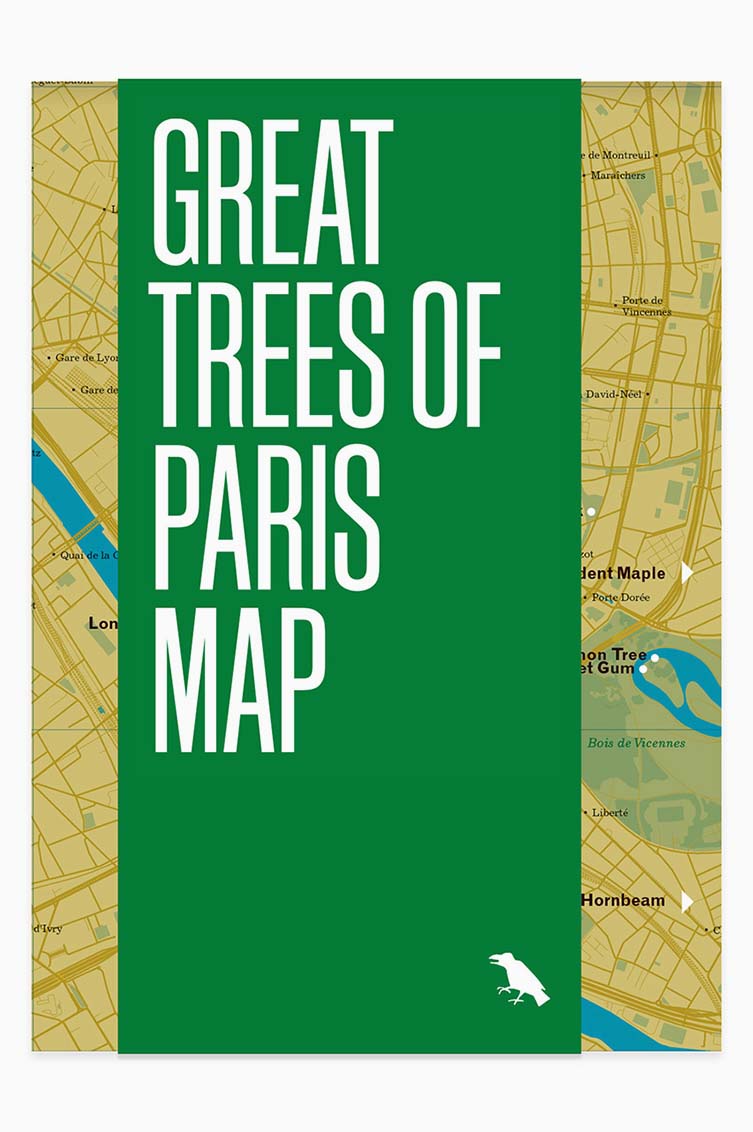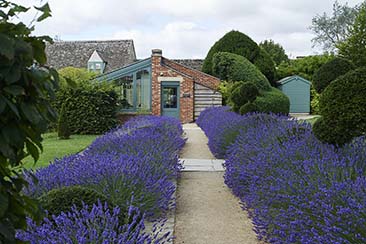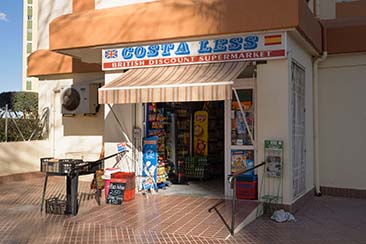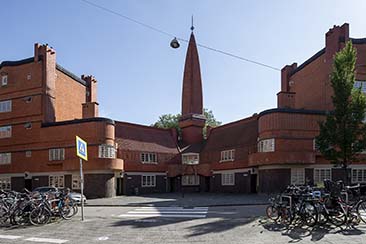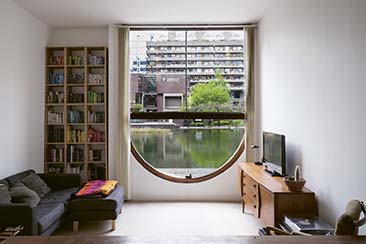Having uncovered the great trees of London and New York, Blue Crow Media have turned their attention to the French capital for the third map in the series, the Great Trees of Paris Map.
With an introduction written by Amy Kupec Larue and photography by Barnabé Moinard, the two-sided guide map includes 50 trees that take the reader on a journey through Paris’s most significant, rare, historic and unique trees spanning all 20 districts of the city. From squares to cemeteries, tree-lined avenues and parks to iconic locations, the map provides insight to the history of the trees of Paris while drawing attention to nature at this critical time in climate emergency.
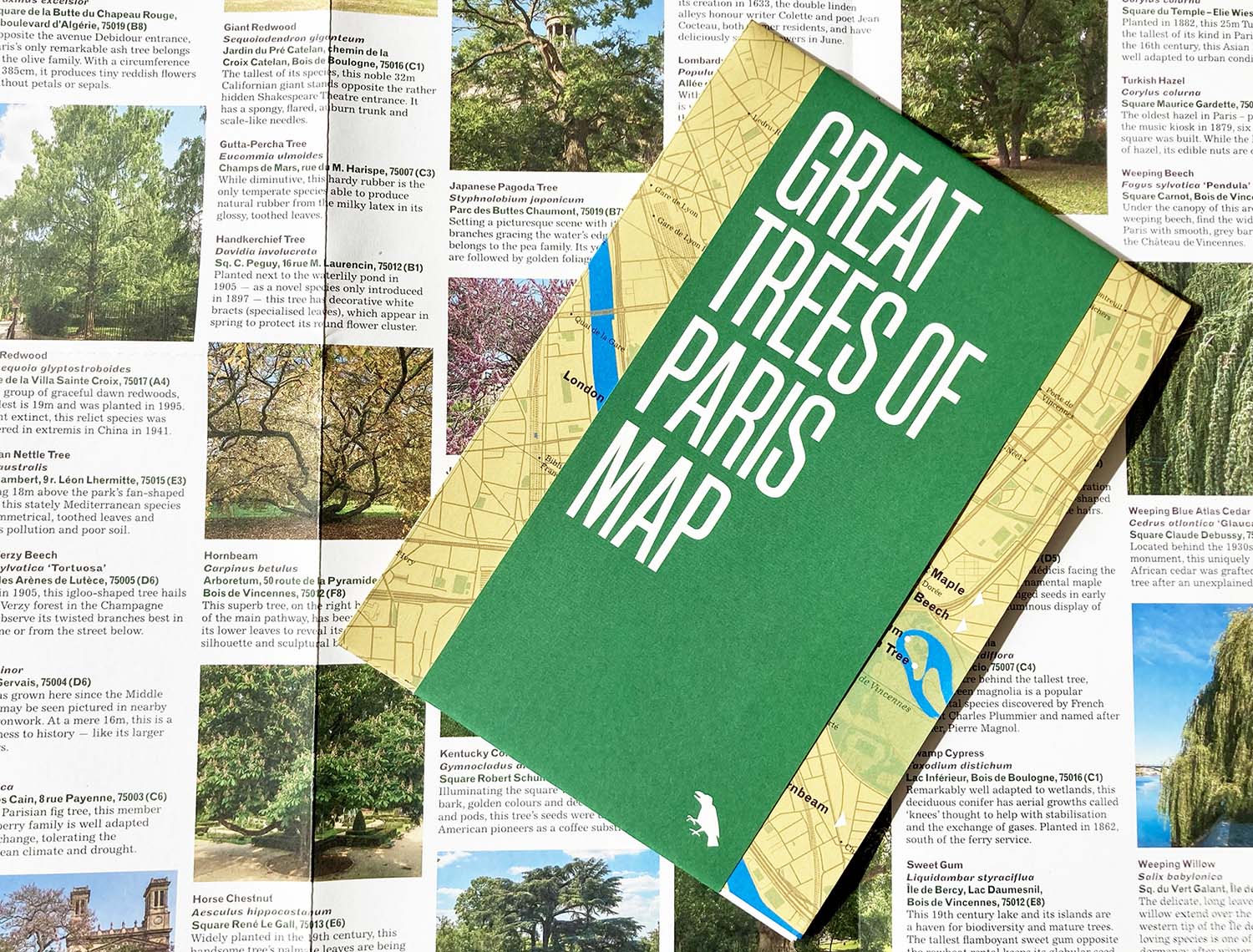
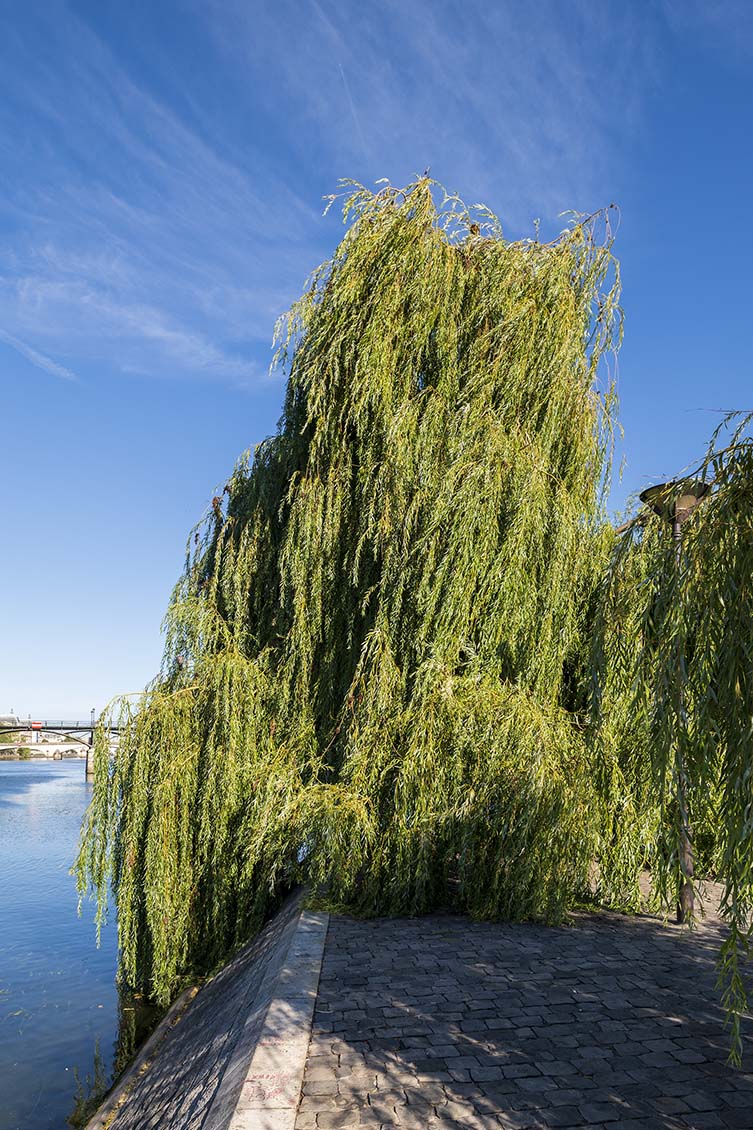
Weeping Blue Atlas Cedar, Cedrus atlantica ‘Glauca Pendula’, Square Claude Debussy, 75016. Located behind the 1930s Claude Debussy monument, this uniquely shaped North African cedar was grafted from the original tree after an unexplained mutation in 1873.
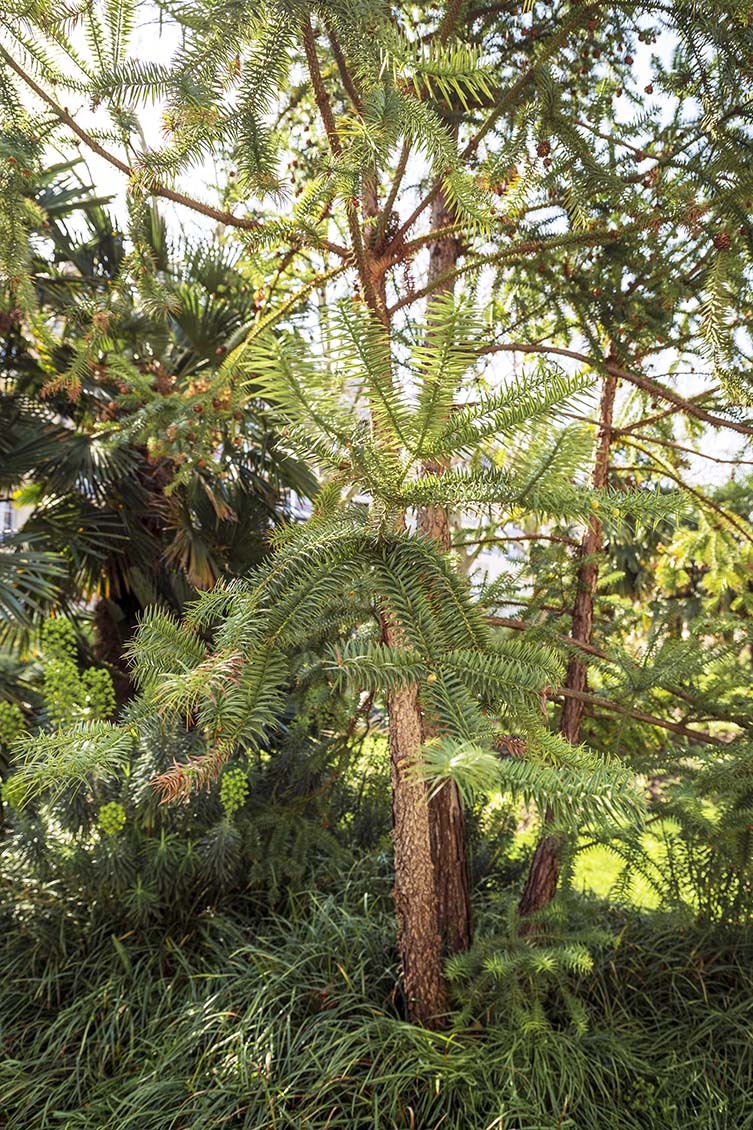
Chinese Fir, Cunninghamia lanceolata, Sq. Boucicaut, 75007. This tree is not actually a fir but a rare, slender conifer in the Taxodiaceae family. Sharp, bright green needles spiral around each stem. An unrelated, curious monkey puzzle tree grows nearby.
Having shaped the urban plan of Paris, the first tree-lined avenues appeared around the 14th century palace of Charles V (the Louvre), before developing extensively in the 17th century with the opening of the Tuileries Garden. The Black Locust tree is the oldest, overlooking the Notre Dame and standing today with the aid of a crutch. The most refined tree must be the Japanese Pagoda tree overhanging the lake at Buttes Chaumont, the most romantic goes to the circle of four Foxglove trees opposite the Delacroix museum, whilst the smallest — the Trident Maple — can be found rooted in Parc Floral’s bonsai pavillion.
As author Amy Kupec Larue writes “all trees have a story to tell. Trees are silent witnesses to centuries of history — events, fashions, celebrations and discoveries. It is our collective responsibility for the 21st century to cherish all this natural patrimony, watching over its oldest members and planting the seeds for future greats.”
With this poignant insight into the importance of respecting our natural world, what better way to look to a brighter future than by honouring its past. The Great Trees of Paris Map is available now to purchase at bluecrowmedia.com.
@bluecrowmaps
@gardenguideparis
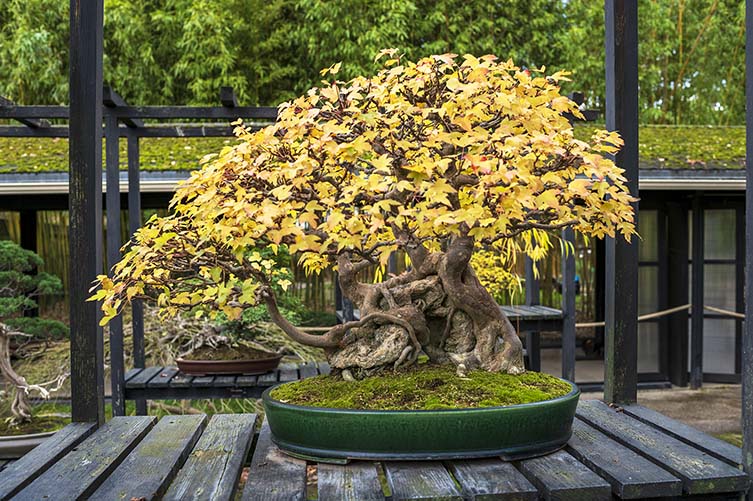
Bonsai Trident Maple, Acer buergerianum, Parc Floral, Bois de Vincennes, 75012. Within the bonsai pavilion’s miniature forest, this elegant tree, native to China, has a vigorous root system and graceful ramifications complementing its tri-lobed leaves — changing colour with the seasons.
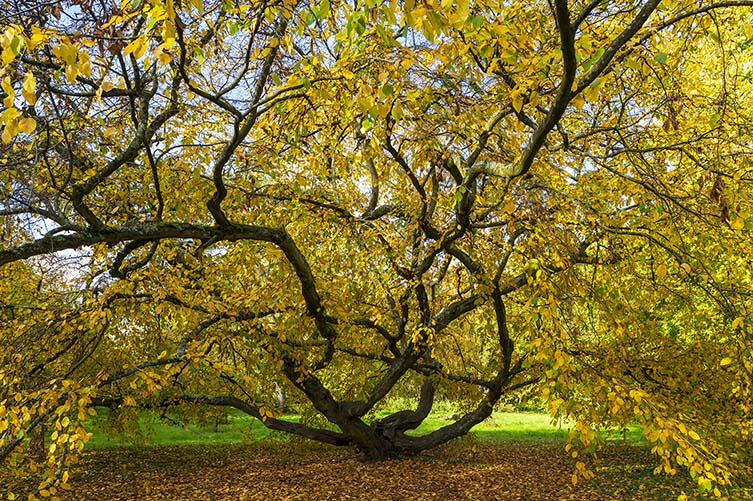
Hornbeam, Carpinus betulus, Arboretum, Bois de Vincennes, 75012. This superb tree, on the right hand side of the main pathway, has been cleared of its lower leaves to reveal its recumbent silhouette and sculptural branches.
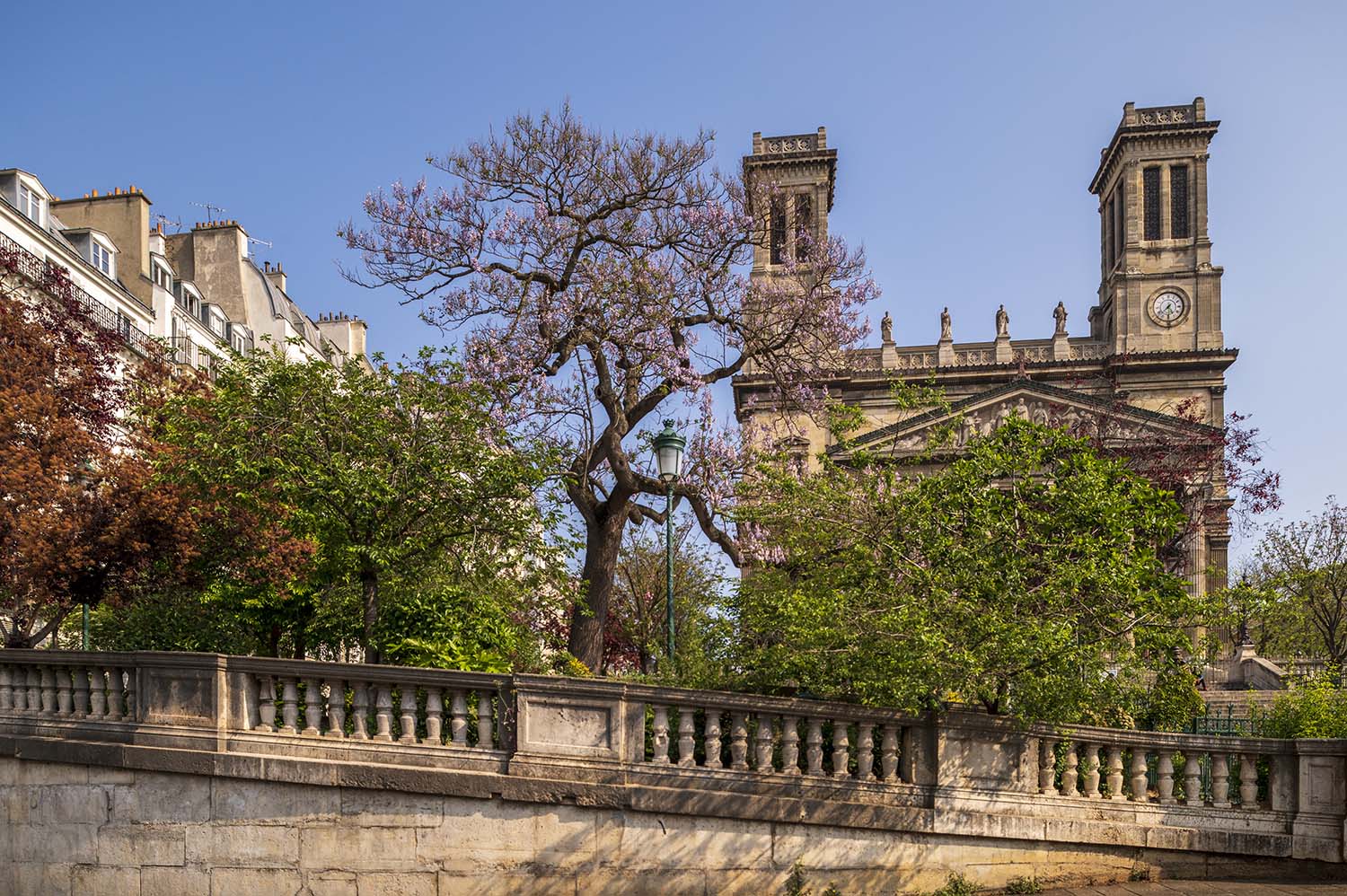
Foxglove Tree, Paulownia tomentosa, Sq. Cavaillé-Coll, 8 pl. Franz Liszt, 75010.
These foxglove trees put on a stunning show in spring with their pale lavender flowers. Each fast-growing tree produces several million seeds annually, which are used to make lacquer.
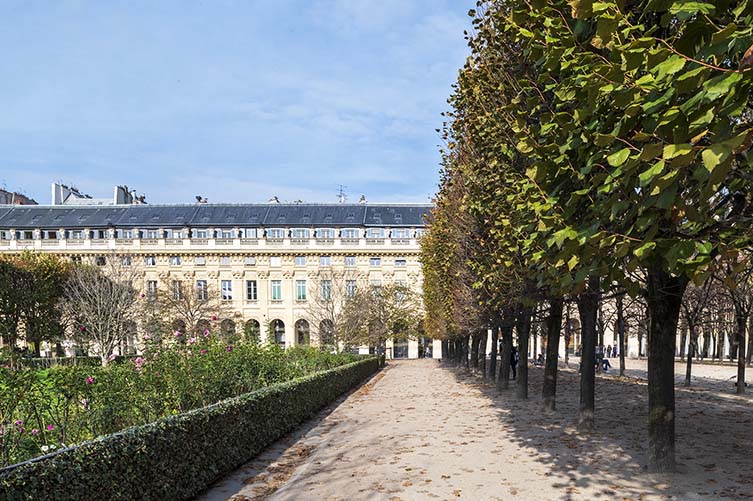
Littleleaf Linden, Tilia cordata, Jardin du Palais Royal, 75001. Embellishing this historic garden since its creation in 1633, the double linden alleys honour writer Colette and poet Jean Cocteau, both former residents, and have deliciously scented flowers in June.
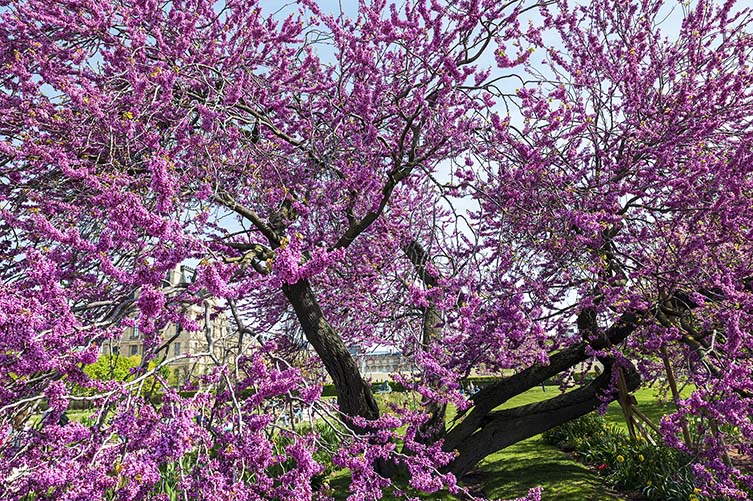
Judas Tree, Cercis siliquastrum, Jardin des Tuileries, 75001. These trees fill the lawns of the Grand Carré with profuse deep fuchsia, edible blossoms in late spring — these appear on its branches and trunk, a phenomenon called ‘cauliflory’.
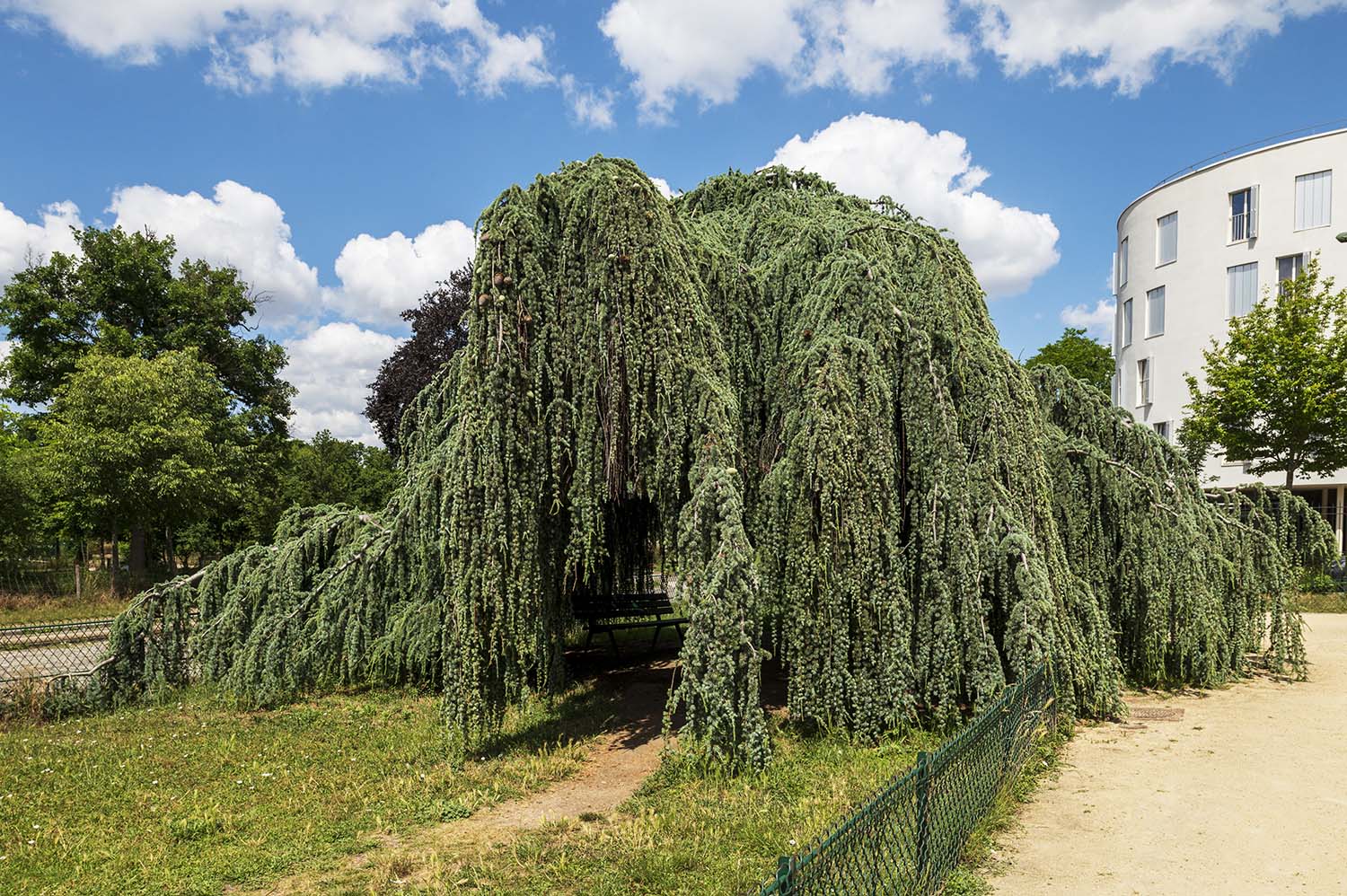
Weeping Blue Atlas Cedar, Cedrus atlantica ‘Glauca Pendula’, Square Claude Debussy, 75016.
Located behind the 1930s Claude Debussy monument, this uniquely shaped North African cedar was grafted from the original tree after an unexplained mutation in 1873.
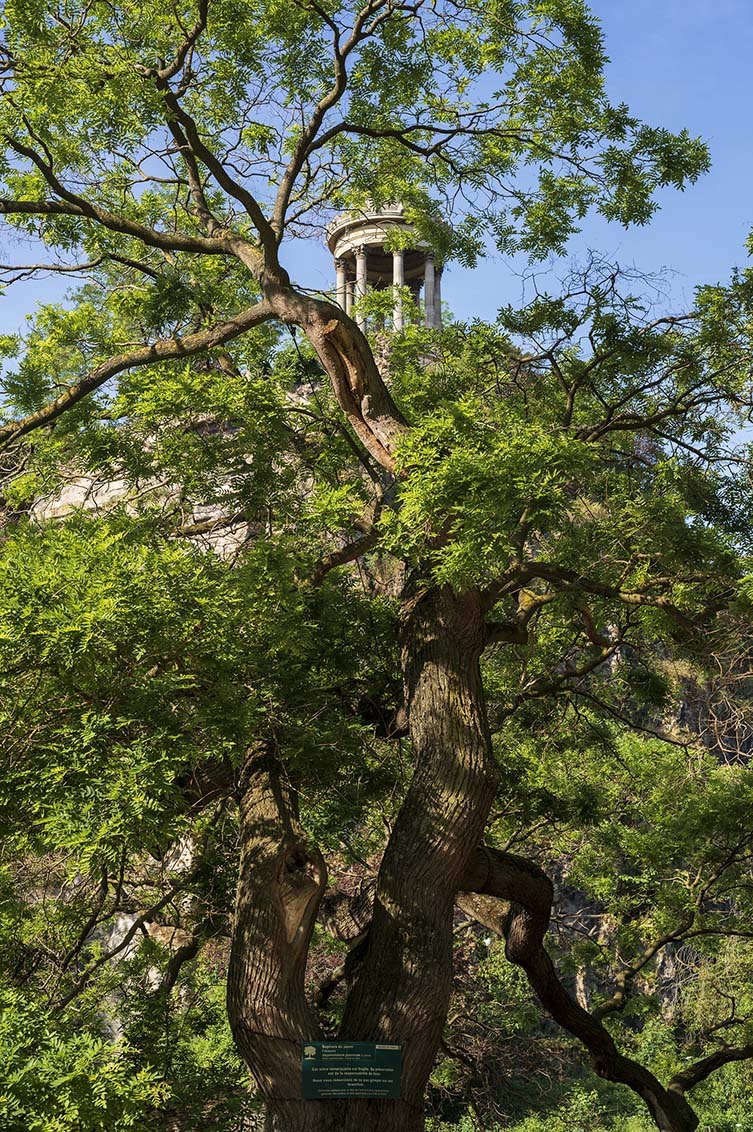
Japanese Pagoda Tree, Styphnolobium japonicum, Parc des Buttes Chaumont, 75019. Setting a picturesque scene with its shapely branches gracing the water’s edge, this tree belongs to the pea family. Its yellow flowers are followed by golden foliage in autumn.
